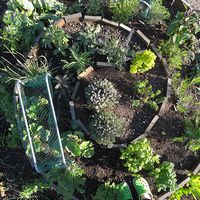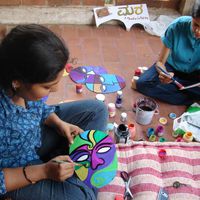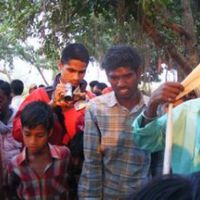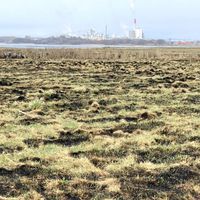Between art and environment: an Indian case study
 This case study is part of an Asia-Europe Foundation commissioned research project entitled “Linking the Arts to Environment and Sustainable Development Issues”. The concept behind this research was based on the observation that carefully documented case studies can not only provide inspiration for networking and collaboration between Asia and Europe but also aid policy making and planning. The selected researchers investigated initiatives of the culture sector as well as civil society organisations working on environmental issues. The complete list of 20 case studies from a selection of countries in Asia will be available to download online from the first half of 2012.
This case study is part of an Asia-Europe Foundation commissioned research project entitled “Linking the Arts to Environment and Sustainable Development Issues”. The concept behind this research was based on the observation that carefully documented case studies can not only provide inspiration for networking and collaboration between Asia and Europe but also aid policy making and planning. The selected researchers investigated initiatives of the culture sector as well as civil society organisations working on environmental issues. The complete list of 20 case studies from a selection of countries in Asia will be available to download online from the first half of 2012.Contributed by Deepak Srinivasan.
The Art of Urban Planning
Artist designers Anuradha Mathur and Dilip da Cunha break paradigms by denouncing rigidity and embracing fluidity to inspire harmonious postcolonial contemplation on the relationship between land and sea to better plan urban settlements.
[caption id="attachment_18901" align="alignnone" width="560" caption="Landscape of an Estuary, project by artist designers Anuradha Mathur and Dilip da Cunha, image courtesy of the artists."]
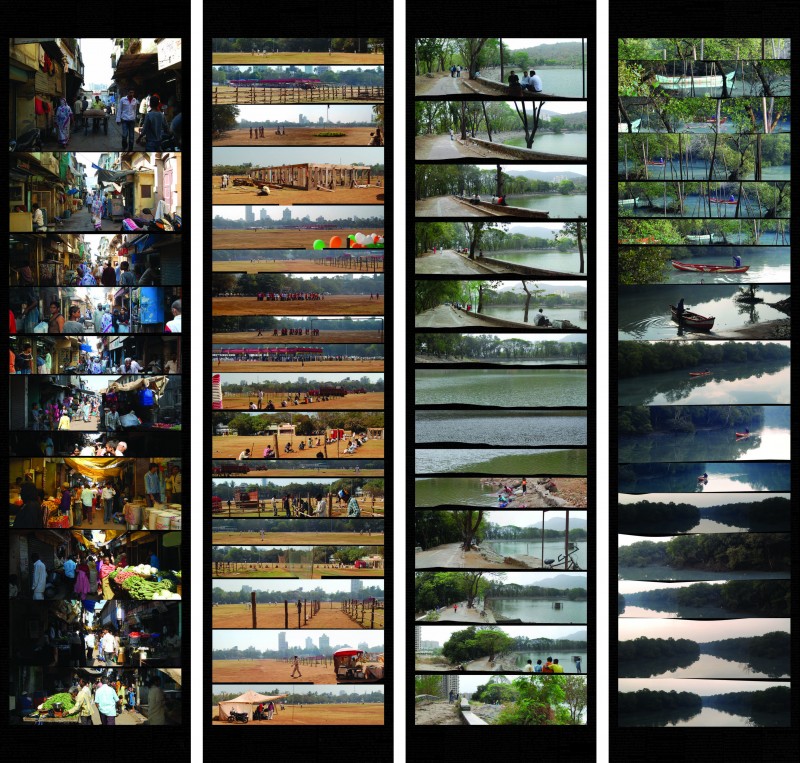 [/caption]
[/caption]Soak: Mumbai in an Estuary (Soak) is a mediation on urban terrain design. Designers Anuradha Mathur and Dilip da Cunha, artists in their own right, produce this postmodernist, interventionist critique of postcolonial India’s urban planning. It is an evolving presentation of new visual methodology that reveals metropolis Mumbai’s relationship with the rain drenched monsoon ecology. As a re-interpretative commentary of estuary land, this project puts the storyteller of ecology centre stage and maps their stories alongside urban and social terrain. By doing so, it systematically critiques previously codified postcolonial imaginations of Mumbai, a south Asian metropolis.
Mathur and da Cunha speak of “embracing complexity” while they articulate the phenomenon of land inundated by monsoon. The duo map a different imaginative experience from operationally rigidified landscaping and planning, incumbent in local municipal bodies. However, this reality of an estuary falls far from the experienced reality of the Mumbai monsoons. In the past decade, Mumbai experienced a disastrous deluge – the floods of 2005. Mathur and da Cunha insist that reconstructing urban water flow infrastructure when designed in conjunction with better understanding of porosities of estuary land might enable a controllable dialogue with the monsoon.
Placing an emphasis on visualising relationships between elements of lived geography, da Cunha highlights the current problem in envisioning land. The designer duo’s visioning exercise works as a critique of colonial, boundary based maps; such maps myopically depict water bodies as confined containments. Colonial mapping techniques do not facilitate a relationship between water, flora, fauna and humanity with its social practices. Through their reinterpretation, the designers problematise current urban planning approaches.
Visibly excited while articulating a shift in land-water relationship captured in a postcolonial, histo-geo, rhetoric as “land of rivers”, a vision which they claim has led to technological and infrastructural scrambling for control, Mathur and da Cunha propose a paradigmatic movement into visuals evoked by “land of rain”. Soak thus provides new avenues to review Mumbai’s mounting complex relationship with the sea.
The sea, usually held culpable as a non-spatial entity in conflict with the geo-terrain, is kept out by building non-negotiable land-sea barriers. As inquiry into this conflict, Soak proposes a redesign keeping in mind porosity and dialogical between land and sea.
Soak takes on revaluation of landscape through sectional viewing which, through varying porosity, allows draining, channelling and containing water, as well as fresh water replenishment. Soak poetically and methodologically attributes a temporality to this land-water inter-relationship and proposes a shift in design, infrastructure and existent municipal and social practices by offering a more fluid elaboration of land usage.
Mathur and da Cunha’s work alludes towards a re-examination of notions of Commons within its new framework of eco-negotiability and urban design. The poetics relocate Commons to a political realm by pitching for an interpretation of utility of occupied space as temporally shifting and elastic, emphasising the importance of temporality and negotiability in thinking and planning. The socio-political responsibility to govern Commons then calls for a re-evaluation in design, maintenance and service in urban systems allowing cost effective visualisations and conversations on technology in urban planning. As designers, da Cunha and Mathur, through their body of work and through Soak propose an art-before-science approach to advance dialogue towards such innovations.
This research was part of the Connect2Culture Art and Environment Programme and was commissioned in conjunction with the dossier: Arts. Environment. Sustainability. How can Culture Make a Difference? culture360.org will be publishing further extracts from the research online, so keep an eye out on the website.
Researchers: Deepak Srinivasan
Deepak Srinivasan is an artist, media practitioner, researcher and facilitator. Deepak is currently a member of Maraa, a media & arts collective based in Bangalore and faculty at Srishti School of Art, Design and Technology, Bangalore.

